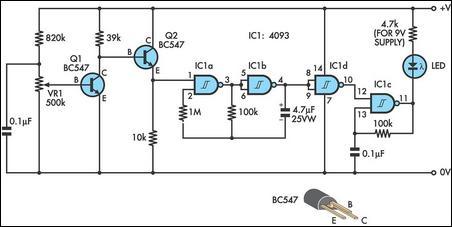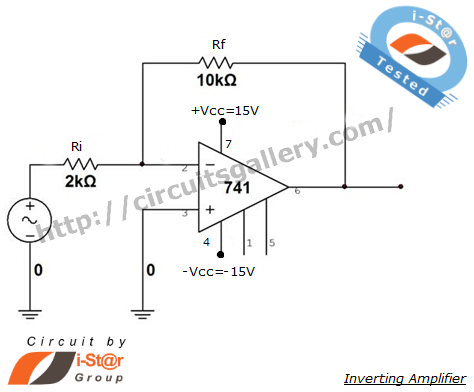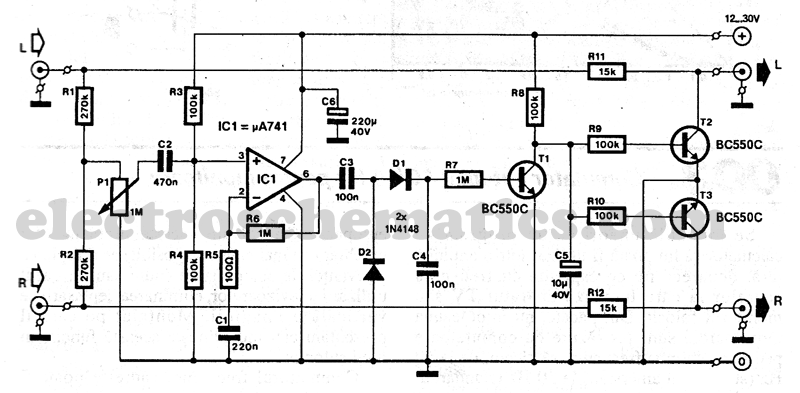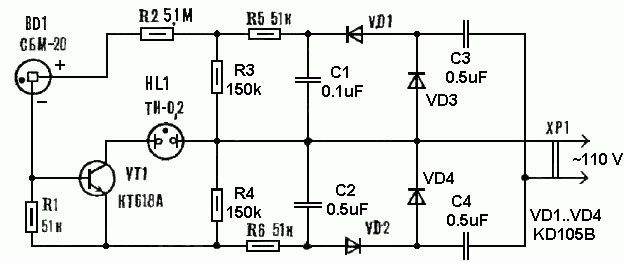
Argon/Krypton Ion Lasers
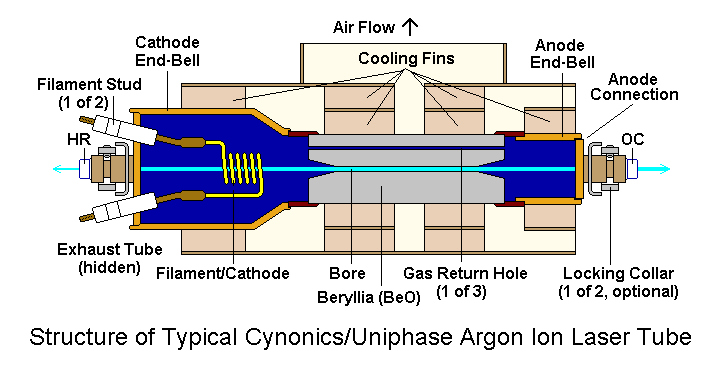
Argon and krypton ion lasers are rare gas ion lasers utilized in various fields including high-performance printing, copying, scanning, typesetting, photoplotting, image generation, forensic medicine, general and ophthalmic surgery, entertainment, holography, electrooptics research, and as optical pumping sources for other lasers. For hobbyists, entertainment and holography applications are often the most significant, alongside the intrinsic project value of high-power lasers. Common sources for these lasers in the surplus market primarily originate from printing applications. Argon ion and krypton ion lasers share similarities in their operation principles, hardware configurations, and power supplies, with differences mainly in the gas fill of the plasma tube and the optical elements used for output wavelength selection. It is important to note that one type cannot be easily substituted for another or converted by simply refilling the tube. Argon and krypton ion lasers are utilized for large-scale light shows, high-performance phototypesetters, holography, and optics research. These lasers require significant investment in terms of time, money, and caution, as they are not designed for simple operation. Maintenance is necessary to achieve optimal output power and prolong tube life, especially for basic tubes, which can be expensive. Costs for tubes can reach several hundred dollars for used ones and upwards of $5,000 for new tubes. Power supplies can also be costly, often exceeding $1,000 if not built from scratch. Large water-cooled units, like various Lexel models, may output several watts and are often used in medical or surgical applications. These units typically require 220 VAC or even 440 VAC, possibly three-phase power, and a tap water connection, necessitating careful consideration regarding installation and operational costs. Lasers sourced from graphics arts machines may consist of components from multiple manufacturers, indicating a degree of interchangeability and availability of replacement parts.
Argon and krypton ion lasers are advanced optical devices that operate through the principle of ionized gas discharge. The ionization of the gas occurs within a sealed plasma tube, where an electric current excites the gas atoms, leading to the emission of coherent light. The design of the laser system includes essential components such as mirrors for optical feedback, which amplify the light through stimulated emission, and a power supply that provides the necessary voltage and current to maintain the ionization process.
The operational characteristics of these lasers are influenced by factors such as the type of gas used, the configuration of the optical cavity, and the cooling mechanisms employed. Argon ion lasers typically emit light in the blue-green spectrum, while krypton ion lasers can produce a range of wavelengths, including red and green, depending on the specific gas mixtures used. The versatility in wavelength output makes these lasers suitable for a wide range of applications, from intricate holographic displays to precise medical procedures.
For hobbyists and professionals alike, the maintenance of argon and krypton ion lasers involves careful monitoring of the gas pressure, ensuring optimal cooling, and periodic replacement of components such as the plasma tube. The investment in high-quality power supplies is crucial, as these components must reliably deliver the required electrical characteristics to sustain the laser operation. The complexity of these systems necessitates a thorough understanding of electronics and optics, as well as safety precautions due to the high voltages and intense light produced.
In summary, argon and krypton ion lasers represent a significant technological achievement in the field of laser optics, with applications that span various industries. Their operation requires a comprehensive understanding of the underlying principles, careful attention to maintenance, and a willingness to invest in the necessary equipment and infrastructure.Argon and krypton (rare gas) ion lasers find applications in many diverse fields including (1) very high performance printing, copying, scanning, typesetting, photoplotting, and image generation; (2) forensic medicine, general and ophthalmic surgery; (3) entertainment; (4) holography; (5) electrooptics research; and (6) as an optical `pumping` sou rce for other lasers. From the hobbyist`s point of view, items (3) and (4) are generally the most important (aside from the pure project value of such higher power lasers). However, common sources for these lasers when they show up on the surplus market are mostly from (1).
Note: For the purposes of this discussion, argon ion and krypton ion lasers are very similar - they are both rare gas ion lasers, their basic principles of operation are similar, and the same basic hardware configuration and power supplies can usually be used. Differences are primarily in gas fill of the plasma tube and the mirrors/prisms for selecting the output wavelength.
Keep this in mind since where we describe something for an argon ion laser, most likely it applies to a krypton ion (or mixed gas `white light`) laser as well. However, this doesn`t mean you can just replace one type with another or convert an argon ion laser to krypton by cracking open the seal on its tube and refilling it!
For more information, see the section: Comparison of Argon and Krypton Ion Tube Characteristics and the chapter: Ar/Kr Ion Laser Power Supplies. These are the types of lasers generally used for large scale light shows as well as in some types of high performance phototypesetters or other digital imagers, and for use in holography and other optics research.
Unlike diode and HeNe types, a serious interest in these also represents a very serious investment of time, money, and caution. Argon ion lasers are not of the `set it and forget it` variety. At least, not those even a financially independent hobbyist can afford. They require a certain amount of maintenance and fiddling to achieve optimal output power and maximize tube life (though this is much less of an issue with internal mirror tubes).
The basic tubes are costly - even reconditioned ones with many hours already on them. Expect to spend several hundred dollars for one that is not even anywhere near to new or in tip-top condition. A new tube may go for $5, 000 or more - just for the tube! The power supply will be even more costly (possibly $1, 000 or more used) unless you build it yourself since while refurb tubes are available, power supplies don`t really wear out so they are in much shorter supply.
As noted, argon and krypton ion lasers are used for many applications. Large water-cooled units (like the various Lexel models) with up to several WATTs of output power were often medical or surgical lasers. While locating one of these in working or even repairable condition at a good price might be your fantasy (it is mine), consider that such a beast will require at least 220 VAC (some use 440 VAC!) and possibly three-phase power, a tap water connection, and likely a fair amount of tinkering (and possibly cost as well) to get it going and keep it going.
While your local electric company will probably be willing and eager to sell you all those kWHs, you may need a large phase converter to convert your residential single-phase power to three-phase or an upgrade your power feed (which may or may not be costly). Here are a couple of links to possible designs: When you obtain a laser that spent its former life as part of a fancy graphics arts machine (or from other sources as well for that matter), it may turn out to be composed of pieces from several manufacturers as parts were replaced or upgraded.
Don`t panic! For better or for worse, this implies a high level of interchangeability among similar size lasers and the availability of replacements and substitute components. In fact, such a hybrid or may be better t 🔗 External reference
Argon and krypton ion lasers are advanced optical devices that operate through the principle of ionized gas discharge. The ionization of the gas occurs within a sealed plasma tube, where an electric current excites the gas atoms, leading to the emission of coherent light. The design of the laser system includes essential components such as mirrors for optical feedback, which amplify the light through stimulated emission, and a power supply that provides the necessary voltage and current to maintain the ionization process.
The operational characteristics of these lasers are influenced by factors such as the type of gas used, the configuration of the optical cavity, and the cooling mechanisms employed. Argon ion lasers typically emit light in the blue-green spectrum, while krypton ion lasers can produce a range of wavelengths, including red and green, depending on the specific gas mixtures used. The versatility in wavelength output makes these lasers suitable for a wide range of applications, from intricate holographic displays to precise medical procedures.
For hobbyists and professionals alike, the maintenance of argon and krypton ion lasers involves careful monitoring of the gas pressure, ensuring optimal cooling, and periodic replacement of components such as the plasma tube. The investment in high-quality power supplies is crucial, as these components must reliably deliver the required electrical characteristics to sustain the laser operation. The complexity of these systems necessitates a thorough understanding of electronics and optics, as well as safety precautions due to the high voltages and intense light produced.
In summary, argon and krypton ion lasers represent a significant technological achievement in the field of laser optics, with applications that span various industries. Their operation requires a comprehensive understanding of the underlying principles, careful attention to maintenance, and a willingness to invest in the necessary equipment and infrastructure.Argon and krypton (rare gas) ion lasers find applications in many diverse fields including (1) very high performance printing, copying, scanning, typesetting, photoplotting, and image generation; (2) forensic medicine, general and ophthalmic surgery; (3) entertainment; (4) holography; (5) electrooptics research; and (6) as an optical `pumping` sou rce for other lasers. From the hobbyist`s point of view, items (3) and (4) are generally the most important (aside from the pure project value of such higher power lasers). However, common sources for these lasers when they show up on the surplus market are mostly from (1).
Note: For the purposes of this discussion, argon ion and krypton ion lasers are very similar - they are both rare gas ion lasers, their basic principles of operation are similar, and the same basic hardware configuration and power supplies can usually be used. Differences are primarily in gas fill of the plasma tube and the mirrors/prisms for selecting the output wavelength.
Keep this in mind since where we describe something for an argon ion laser, most likely it applies to a krypton ion (or mixed gas `white light`) laser as well. However, this doesn`t mean you can just replace one type with another or convert an argon ion laser to krypton by cracking open the seal on its tube and refilling it!
For more information, see the section: Comparison of Argon and Krypton Ion Tube Characteristics and the chapter: Ar/Kr Ion Laser Power Supplies. These are the types of lasers generally used for large scale light shows as well as in some types of high performance phototypesetters or other digital imagers, and for use in holography and other optics research.
Unlike diode and HeNe types, a serious interest in these also represents a very serious investment of time, money, and caution. Argon ion lasers are not of the `set it and forget it` variety. At least, not those even a financially independent hobbyist can afford. They require a certain amount of maintenance and fiddling to achieve optimal output power and maximize tube life (though this is much less of an issue with internal mirror tubes).
The basic tubes are costly - even reconditioned ones with many hours already on them. Expect to spend several hundred dollars for one that is not even anywhere near to new or in tip-top condition. A new tube may go for $5, 000 or more - just for the tube! The power supply will be even more costly (possibly $1, 000 or more used) unless you build it yourself since while refurb tubes are available, power supplies don`t really wear out so they are in much shorter supply.
As noted, argon and krypton ion lasers are used for many applications. Large water-cooled units (like the various Lexel models) with up to several WATTs of output power were often medical or surgical lasers. While locating one of these in working or even repairable condition at a good price might be your fantasy (it is mine), consider that such a beast will require at least 220 VAC (some use 440 VAC!) and possibly three-phase power, a tap water connection, and likely a fair amount of tinkering (and possibly cost as well) to get it going and keep it going.
While your local electric company will probably be willing and eager to sell you all those kWHs, you may need a large phase converter to convert your residential single-phase power to three-phase or an upgrade your power feed (which may or may not be costly). Here are a couple of links to possible designs: When you obtain a laser that spent its former life as part of a fancy graphics arts machine (or from other sources as well for that matter), it may turn out to be composed of pieces from several manufacturers as parts were replaced or upgraded.
Don`t panic! For better or for worse, this implies a high level of interchangeability among similar size lasers and the availability of replacements and substitute components. In fact, such a hybrid or may be better t 🔗 External reference
